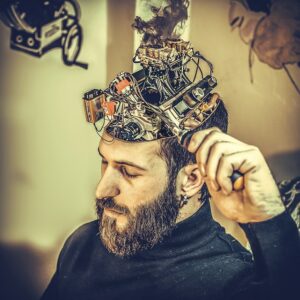Listening is so last year — Meta’s new tech wants to feel your voice

source: media.hubspot.com (contributed by Artemus founder, Bob Wallace) | image: pixabay.com
Great news for the vocal fry community: Your vocal cord vibrations could soon be put to good use protecting your data.
Seriously. Meta filed a patent application for user authentication using a “combination of vocalization and skin vibration,” per Patent Drop.
That title is a mouthful, so let’s break it down:
- Meta wants to replace the need for passwords or fingerprint scanning with voice authentication for accessing systems like its AR headset or smart glasses.
- But AI has made impersonating someone’s voice really easy, with convincing voice cloning and deep fakes already swirling.
- So Meta is taking voice authentication one step further by scanning the “vibration of tissue” during speech in addition to one’s voice.
- When a user says a wake word, a “vibration measurement assembly” picks up the vibrations of their skin and the acoustic waves of their voice to authenticate them.
The combined dataset would create a unique audio fingerprint and, when built into headsets and glasses, would let users access their systems with a single word.
And while no one likes their password getting hacked, the stakes are getting a hell of a lot higher, with new tech poised to start harvesting data directly from our brains.
Sounds interesting
This patent is just the latest of Meta’s voice authentication tech. A separate “user identification with voice prints” patent application would see voice prints integrated into the two-factor authentication process for the company’s social media apps.
And Meta is far from the only company thinking about voice biometrics — the market is projected to hit 11.1B by 2032.
It will only become more important as AI companies crank out new voice generation tools, like OpenAI’s Voice Engine, which can clone someone’s voice using only a 15-second clip of them speaking, or ElevenLabs’ Reader App, which can clone celebrity voices.









